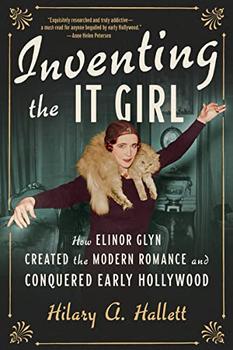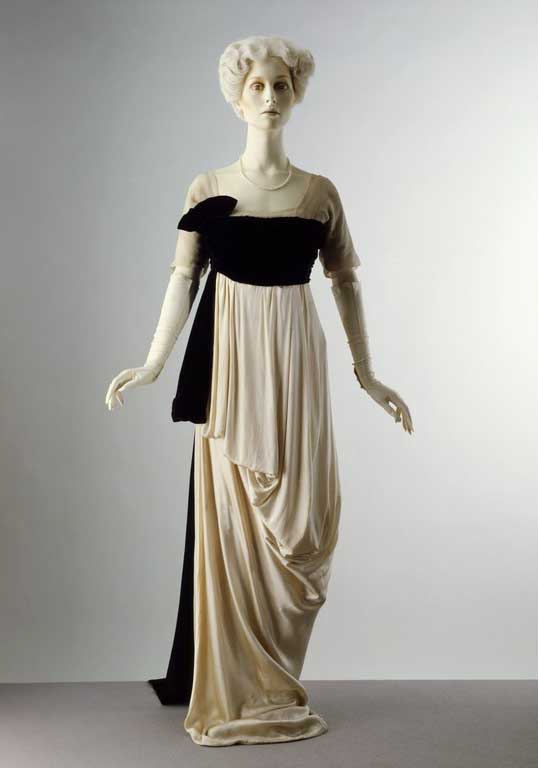Summary | Excerpt | Reviews | Beyond the Book | Read-Alikes | Genres & Themes | Author Bio

How Elinor Glyn Created the Modern Romance and Conquered Early Hollywood
by Hilary A. HallettThis article relates to Inventing the It Girl
 In the introduction to her biography of Elinor Glyn, author Hilary A. Hallett acknowledges that one of the biggest challenges she faced in writing the book "was not to let [Glyn's] many fascinating friends—and the many places they traveled—carry away the narrative for too long." Among the most intriguing of the secondary characters who populate Glyn's story is her older sister Lucy, later known as Lucy Duff-Gordon following her marriage to her second husband. Most high-born women of the Edwardian period, however, would have known Glyn's sister simply as Lucile, after the high-fashion clothing line she founded as one of the era's most famous couturiers.
In the introduction to her biography of Elinor Glyn, author Hilary A. Hallett acknowledges that one of the biggest challenges she faced in writing the book "was not to let [Glyn's] many fascinating friends—and the many places they traveled—carry away the narrative for too long." Among the most intriguing of the secondary characters who populate Glyn's story is her older sister Lucy, later known as Lucy Duff-Gordon following her marriage to her second husband. Most high-born women of the Edwardian period, however, would have known Glyn's sister simply as Lucile, after the high-fashion clothing line she founded as one of the era's most famous couturiers.
According to Hallett's book, Glyn was, in fact, partially responsible for the launch of Lucy's career, after Lucy designed the gown her sister wore for her presentation at court, and later the costumes for a play in which Glyn starred. Soon Lucy's services were in demand, and she counted among her clients many of the most notable socialites of her day. Following the end of her first marriage to divorce, she became a true innovator and an entrepreneur, opening couture boutiques — bearing her "Lucile" brand name — in Paris, London, New York and Chicago.
Her relatively unstructured, diaphanous and layered gowns became favorites of early Hollywood actresses, including Mary Pickford and Norma Talmadge, as well as modern dancer Isadora Duncan. Some sources credit her with the invention of the modern runway fashion show, since she staged private "mannequin parades," theatrical processions complete with special lighting and music showcasing Lucile gowns worn by professional models.
As if this life weren't sufficiently colorful, Lucy was also one of the most famous passengers aboard the Titanic. Notably, both she and her second husband, Cosmo Duff-Gordon, as well as Lucy's secretary, survived the sinking in what was seen as rather controversial fashion. The three of them escaped on a lifeboat manned mostly by Titanic crewmembers that was lowered from the sinking ship with only 12 people aboard, rather than the 40 it had capacity for. Rumors abounded that Cosmo had bribed the crewmembers to push on toward safety rather than returning to pick up more survivors.
Although Lucile's business dropped off significantly following World War I and the company ceased operations soon thereafter, Lucy Duff-Gordon's contributions to fashion and film were notable. Exhibitions including her gowns have been shown at the Metropolitan Museum of Art, the Victoria & Albert Museum, and the Fashion Institute of Technology, which held an exhibition devoted exclusively to the Lucile brand in 2005.
Gown by Lucy Duff-Gordon, courtesy of Wikimedia Commons
Filed under People, Eras & Events
![]() This "beyond the book article" relates to Inventing the It Girl. It originally ran in September 2022 and has been updated for the
April 2024 paperback edition.
Go to magazine.
This "beyond the book article" relates to Inventing the It Girl. It originally ran in September 2022 and has been updated for the
April 2024 paperback edition.
Go to magazine.
Your guide toexceptional books
BookBrowse seeks out and recommends the best in contemporary fiction and nonfiction—books that not only engage and entertain but also deepen our understanding of ourselves and the world around us.